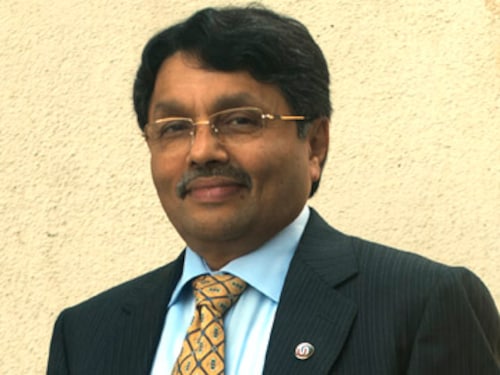The Next 40 Years Will be the Best for India
Union Bank head MV Nair talks to Forbes India about the benefits of a long tenure and about his future plans for credit information bureau, CIBIL


Name: Mavila Vishwanathan Nair
Age: 60 years
Designation: Was chairman and managing director, Union Bank of India. Is also chairman of CIBIL (Credit Information Bureau India).
Education: St. Alyosius College, Mangalore.
Career: Started at Corporation Bank and was chairman and managing director of Dena Bank.
Interests: Reading about countries that are at a similar stage of economic development to India.
Q. You’ve had a fairly long tenure, from 2006-2012. This is unusual for a public sector bank. Your thoughts?
In a large organisation, one needs to have at least five or six years, it gives you a lot of flexibility to actually set your goal on a long-term horizon, rather than working on a Q-o-Q [quarter on quarter] basis, where the share market wants you, analysts want you. At times, if you’re only focussed on that and have a tenure of one or two years, you may actually miss out on how exactly to strengthen the organisation. The way we went about it is also simply focussing on a longer view of 2020. We knew that you can’t have a 14-year vision. We broke that into pieces. And said 2012 is the first level that’s the time when I was to move out. Then it’ll be a rolling plan. Today, when we look back, because I had six years, we could do a lot of things. We’re ready to exploit the opportunity thrown up by the country or economy.
Q. How in the last six years has the economy changed and how has lending changed?
With all the negatives attached, we’re in one of the best countries. The next 40 years for India, will be the best time. 7-8 percent growth means that growth is going to come from every sector. Though we went for infrastructure lending, the preference for Union bank has been to be a retail bank. Home loans, in the next 10 years, are expected to grow by 10 times!
Middle income group customers being added to the industry is almost about 200-300 million. These are all opportunities, wealth is being created and they all need retail products. The transformation in the bank would primarily be on the retail side.
Similar opportunities are coming from [small and medium enterpprises] SME’s and agriculture. It should be relevant to three classes of people: Generation Y customers, new bankable class from the rural market and existing customers. Today we’ve a market share of 3.5 percent. If I get 7 percent market share in Gen Y and new bankable class, retail business will get 7 percent share and we’ll be able to reach our goal.
Q. Do you think there is scope for the net interest margins [NIM’s] to come down in India to match global levels?
If you analyse, we’re not very high. There are few countries that are lower. If you take Brazil and other comparable countries NIM is quite high. Why we may need NIM at this range is for a couple of reasons. We have priority sector lending, we finance government borrowing. If we do not do financial inclusion, we won’t survive long enough to enjoy the benefits. So it’s necessary that we reach out. So, in a country as diverse as India, the cost factor is higher and that has to come in by the NIM. Post Basel-III, the requirement of capital will be huge. If you’ve to have that kind of capital then your margin has to be reasonably higher.
Q. Your next role is going to be as chairman of CIBIL. One of the criticisms has been that they maintain only a negative list and not a positive list. How do you see agencies like CIBIL evolving?
The best part of CIBIL is that they’ve collected information. Banks have started using this information, just to see whether he’s a defaulter. CIBIL itself has developed a lot of capabilities and has developed its products. And one of the products, to see the track records of customers.
Q. What are some of the other things that you see CIBIL doing in the years to come that they’re not doing now?
Firstly, we’re yet to cover smaller towns and its one of the major challenges we have. Secondly, since in India technology is very strong, the best products available globally will soon be available in India.
First Published: May 09, 2012, 06:23
Subscribe Now